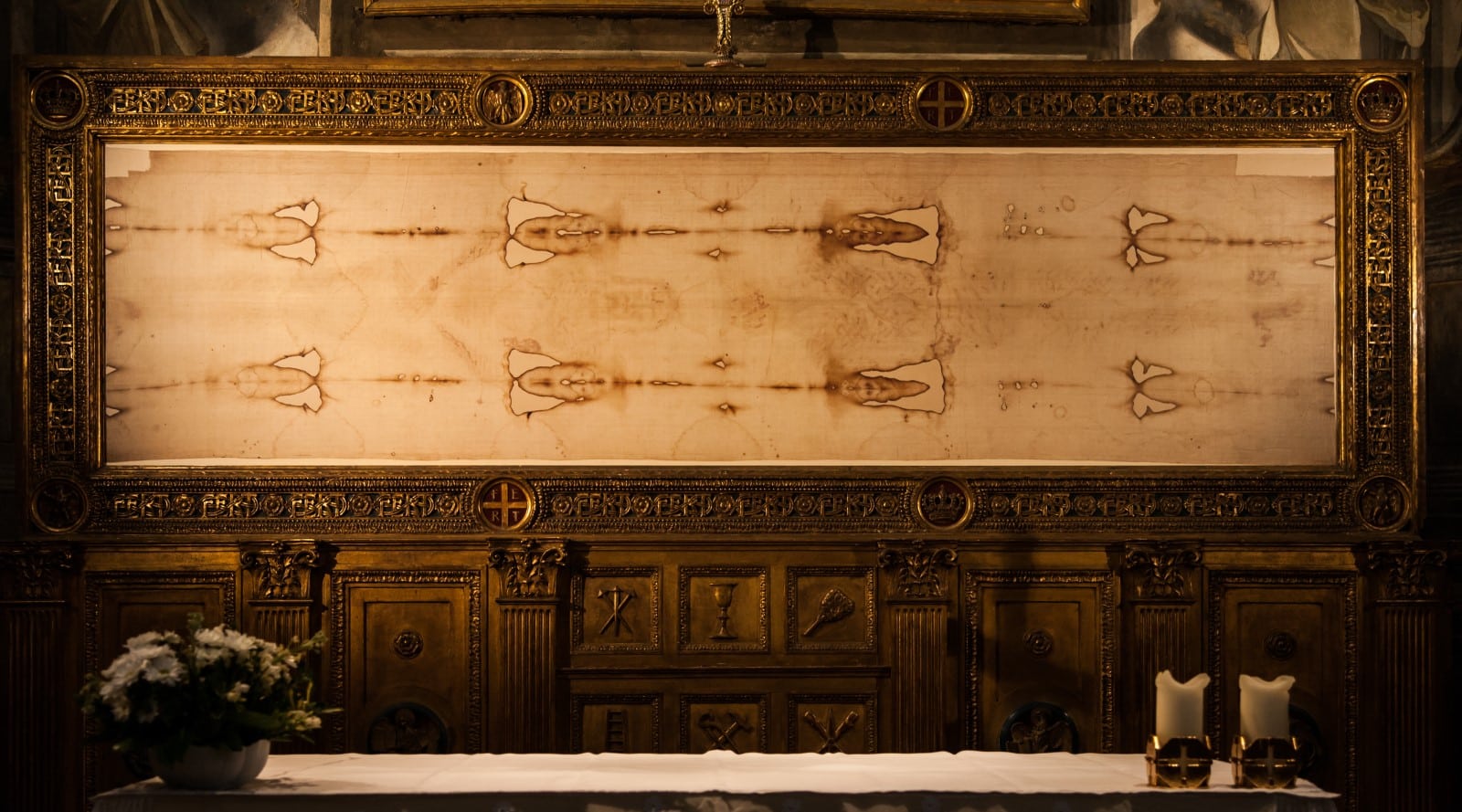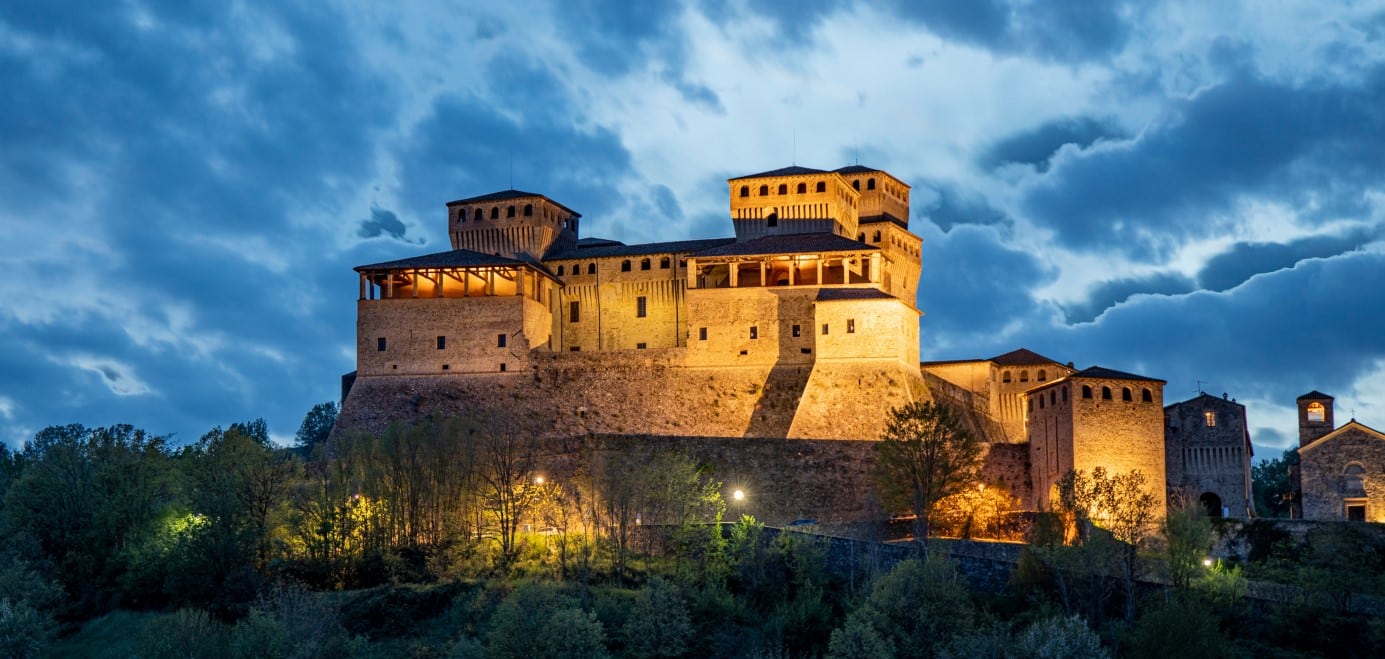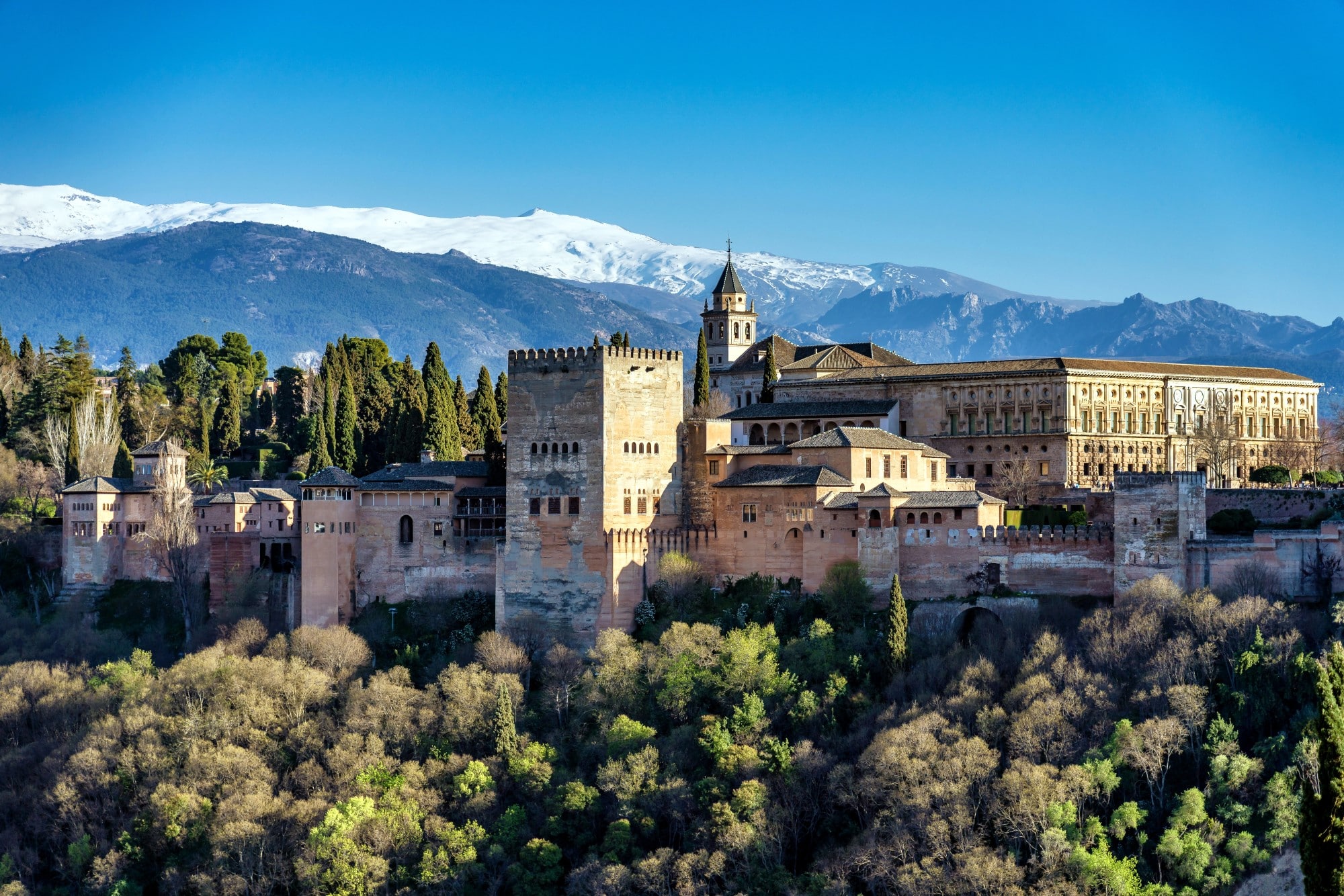
The Alhambra (SV) is a rich and complex historical site that is deeply intertwined with the Islamic history of Spain. It was originally constructed as a small fortress in 889 AD on the remains of Roman fortifications. However, the current complex was largely built by the Nasrid dynasty in the mid-13th century. The Nasrids were the last Muslim dynasty in the Iberian Peninsula. After the Christian Reconquista in 1492, the site became the Royal Court of Ferdinand and Isabella, and many of its Islamic features were altered or replaced with Christian structures.
The Alhambra is located in Granada, in the autonomous community of Andalusia, Spain. It sits on a strategic point, on top of the hill al-Sabika, overlooking the city and the plains of Granada. This location gives it a commanding view of the area, which was crucial for its military purpose in the past.
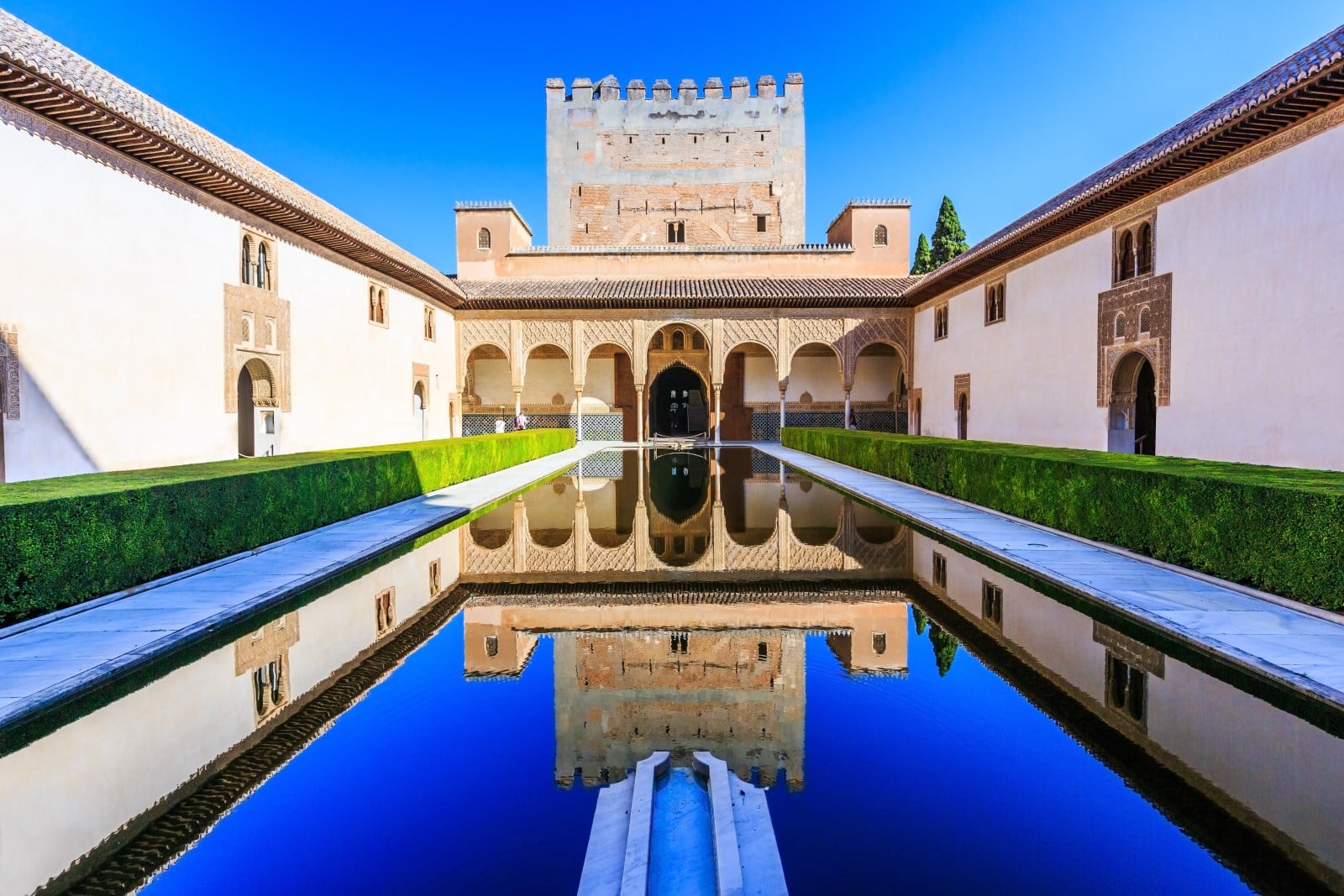
Architectural Design
The Alhambra is renowned for its Islamic architecture, which is among the best in the world. The Nasrid Palaces are the heart of The Alhambra, known for their intricate Islamic art, beautiful courtyards like the Court of the Lions, and detailed tile work. Alcazaba is the oldest part of the Alhambra-this fortress offers panoramic views of Granada and the surrounding areas.

The summer palace and gardens are designed for leisure and relaxation, with beautiful fountains, pavilions, and lush greenery. The Islamic architecture is characterized by horseshoe arches, arabesque patterns, calligraphy, and muqarnas (stalactite ceiling decorations). Here are some key aspects of these designs:
Intricate Stucco Work: The walls of the Alhambra are adorned with intricately carved stucco. These are not just decorative; they often carry inscriptions, mostly poems and verses from the Quran. The stucco work includes arabesques (geometric floral designs), ataurique (stylized plant motifs), and calligraphy, showcasing a blend of artistic beauty and spiritual symbolism.
Tilework (Azulejos): The Alhambra’s walls are also decorated with colorful ceramic tiles, known as ‘azulejos.’ These tiles form complex geometric patterns, demonstrating the Islamic art principle that beauty lies in mathematical perfection. The use of geometric patterns also stems from the Islamic prohibition against the depiction of animate beings in religious art.
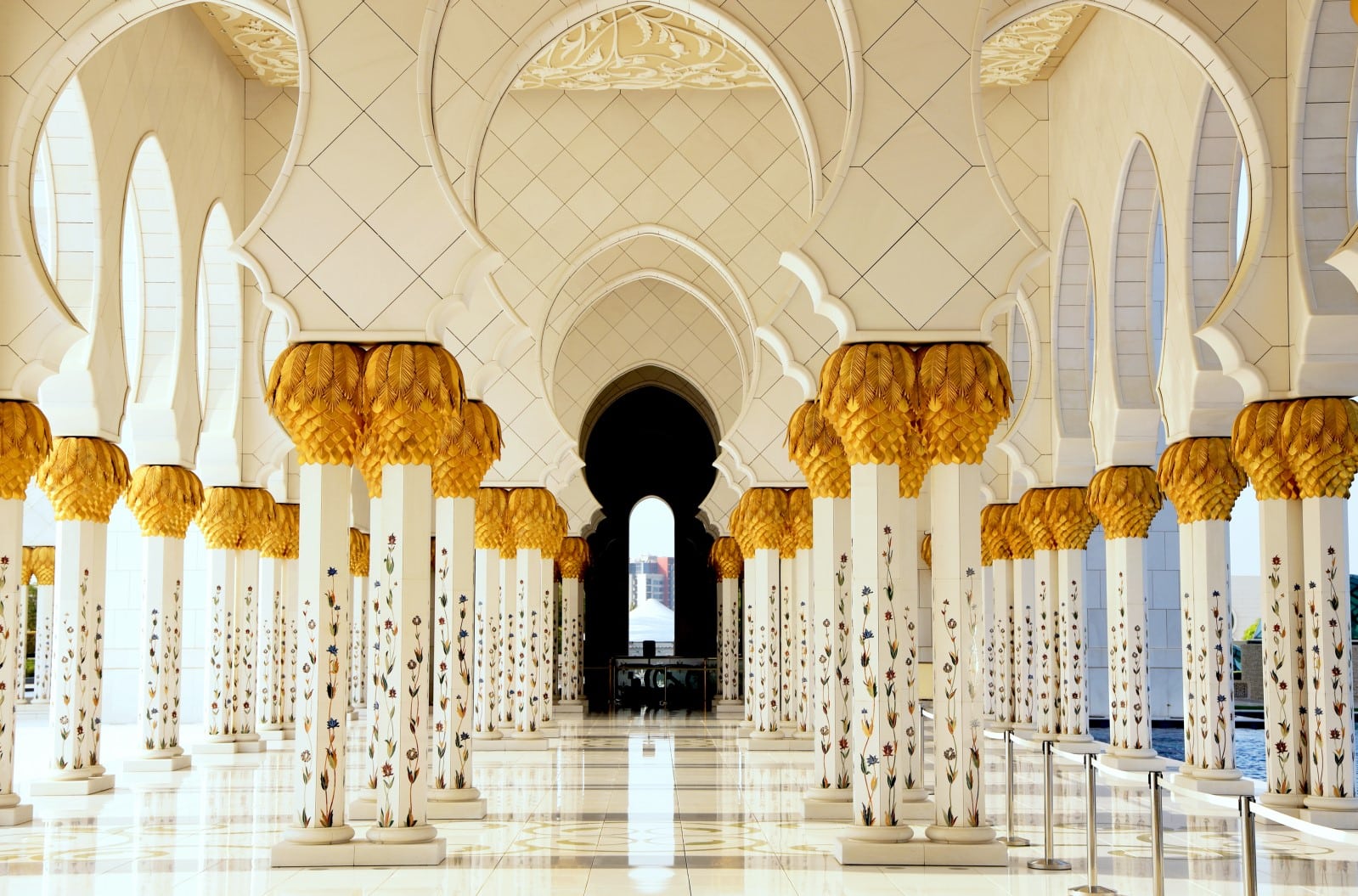
Muqarnas: A distinctive feature of Islamic architecture, muqarnas are used extensively in the Alhambra. They are ornamental vaulting, often appearing like stalactites, and are used in domes and arches. This architectural feature creates a sense of celestial infinity and is a hallmark of Moorish architecture.
Water Features: The use of water is both aesthetic and symbolic in the Alhambra. Reflecting pools, fountains, and narrow water channels are common, symbolizing purity and the passage of life. The Court of the Lions, for example, has a famous fountain supported by lions, with water flowing through it, representing a technological and artistic marvel.

Gardens and Court Yards: The Alhambra integrates natural elements into its design, with several courtyards like the Court of the Myrtles and the Generalife Gardens. These gardens are not just for beauty but are a reflection of paradise as described in Islamic texts, with flowing water, fragrant flowers, and lush greenery.
Wooden Ceilings and Domes: Wooden ceilings in the Alhambra feature intricate lattice work and detailed carvings. The domes, especially in the Hall of the Two Sisters and the Hall of the Ambassadors, are masterpieces of craftsmanship, with detailed star-like patterns that create an effect of the night sky.

Light and Shadow Play: The architects of the Alhambra were masters of playing with light and shadow. The placement of windows, the intricacy of latticework, and the strategic positioning of structures were designed to create a play of light that changes the appearance and ambiance of rooms throughout the day.
Hidden Secrets and Folklore
It’s believed that the intricate Arabic inscriptions contain secret messages and wisdom. Scholars have spent years deciphering these.
El Partal: Legends suggest that this area, with its large pond and arcade, is haunted by the spirits of those who once lived there.
The Court of the Lions: This famous courtyard is surrounded by numerous myths and legends, particularly focusing on the intricate symbolism of its design.

The Legend of the Sultana’s Sigh
The Story
According to the legend, the Sultana, while walking in the gardens of the Generalife, encountered a Christian captive. This young man was of noble birth and strikingly handsome. They fell in love, but their love was a forbidden one, not only because of their different faiths but also because the Sultana was already married to the Sultan.
Their secret meetings continued, often in the secluded areas of the Alhambra. However, as with most secrets, theirs eventually came to light. The story varies here: some versions suggest that the Sultana’s husband, the Sultan, discovered the affair himself, while others say that jealous members of the court, particularly the Zegries, another noble family, revealed the affair to the Sultan.
Enraged by this betrayal, the Sultan devised a cruel plan for revenge. He invited the knights of the Abencerrajes family to the Alhambra under false pretenses. Once they were in the Court of the Lions, he accused them of the affair with the Sultana and had them executed over a marble basin, which is said to have been stained with their blood.
The Sultana’s Fate
The fate of the Sultana varies in different tellings of the story. Some say she was killed along with her lovers, others that she was imprisoned in the towers of the Alhambra, spending her remaining days in solitary sorrow. It’s from this sorrow that the “Sultana’s Sigh” arises, a metaphor for the eternal grief and regret that haunts the palace.

Alhambra as a Military Fortress
Its Strategic Location: The Alhambra is situated on a hilltop, the Sabika hill, which provides a strategic vantage point over the surrounding area. This elevation made it easier to spot approaching enemies and defend against attacks. The steep slopes of the hill and the Darro river provided natural defenses, making it difficult for invaders to access the fortress without being detected.
The Original Fortress Structure: The oldest part of the Alhambra, the Alcazaba, served as the military area. It is essentially a fortified citadel within the larger complex. The Alcazaba contains several watchtowers, such as the Torre de la Vela (Watchtower) and the Torre del Homenaje (Keep). These towers were used for surveillance and defense. The Torre de la Vela, in particular, offers panoramic views, crucial for monitoring the surrounding areas.
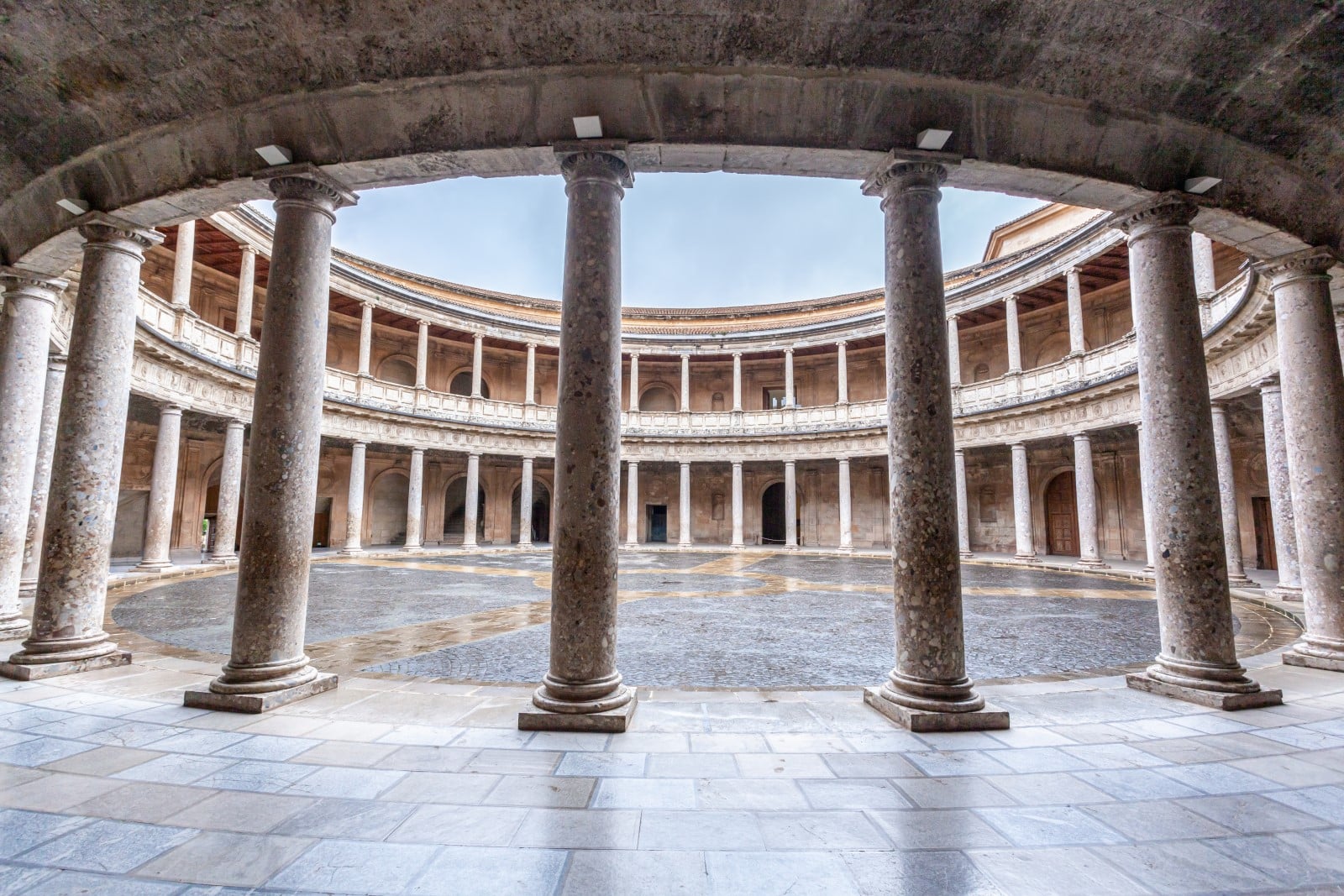
Large Defensive Walls: Walled Enclosure: The Alhambra was surrounded by defensive walls that were thick and tall, providing a formidable barrier against invaders. The walls were equipped with gates and battlements. Gates like the Puerta de las Armas (Gate of Arms) were heavily fortified. Battlements provided positions for archers and soldiers to defend the fortress.
Garrison: Inside the Alcazaba, there were barracks to house the soldiers. The presence of a permanent military garrison ensured that the fortress was always ready for defense. The fortress contained armories for storing weapons and was equipped to stockpile supplies, allowing it to withstand sieges.
Surveillance and Communication: Signal Towers: The towers of the Alhambra were likely used for signaling to coordinate defense and communicate with other nearby fortifications. Within the walls, there were routes for patrolling guards, ensuring that any breach could be quickly responded to.
The Alhambra is not just a historical site but a cultural icon, reflecting the complex layers of Spanish history. Its blend of Islamic art and architecture with later Christian influences makes it a unique and enduring destination for the traveler visiting Spain.
Traveler Best Hotel Picks


Traveler Best Restaurant Picks
La Vinoteca is a place where you can fuse traditional Andalusian cuisine with a touch of originality. Surprising montaditos, cheeses, Iberian hams… They complete the flavour of the wide variety of wines from different designations of origin, cavas and champagnes from our winery.

At Blue Vitola we adapt the menus in a personalized way and try to make the decoration of the event go according to the reason for the celebration, making each one unique.



